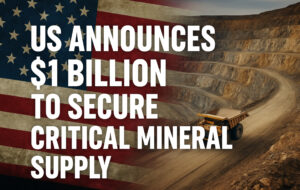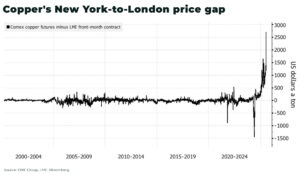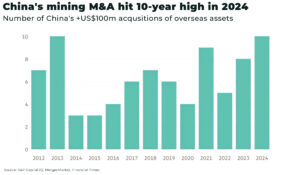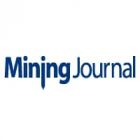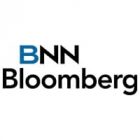Critical Minerals and Energy Intelligence
Copper
Copper demand is projected to double — to 50 million metric tons by 2035 — with demand driven by overhauling national electricity grids, renewable power expansion, and the tech and electric vehicle boom.
To put the demand increase in perspective: the energy transition will need more copper than all the world has consumed from 1900-2021.
If you plan to trade, get ready for plenty of volatility in the copper market as prices face a variety of risks including: inflation, concerns over recession, as well as manufacturing contractions in Europe and China.
However, the fundamentals are strong in the long-term with government commitments and challenges in building out secure copper supply.
copper Insights
Industry copper report
Global supply of copper, essential for a host of industries and crucial to green technology and the global energy transition, is expected to face a supply gap of nearly 10 million mt within the next ten years, according to a new report.
Report: Copper, at the centre of the metal supercycle
Latest infographics on copper:
Copper (Cu)
Copper, atomic number 29, is a reddish-orange metal renowned for its superior electrical conductivity, corrosion resistance, and versatility. With a melting point of 1,085°C, copper is essential across industries ranging from energy to construction.
As global electrification accelerates, copper’s role in technology, data centers, electric grids, renewable energy and electric vehicles solidifies its status as a critical material.
Why copper matters: strategic applications
Electrification and renewable energy
Copper is indispensable in the global transition to clean energy due to its high conductivity and durability:
-
electric vehicles (EVs): EVs require 2-4 times more copper than traditional cars, with an average EV containing 83kg of copper in batteries, motors, and charging systems
-
renewable energy infrastructure: wind turbines and solar panels are copper-intensive. A single wind turbine can use up to 5 tons of copper in its generator coils and wiring
-
grid modernization: copper plays a key role in upgrading power grids to support renewable energy integration and electrification
Construction and infrastructure
Copper is widely used in building materials due to its durability and antimicrobial properties:
-
electrical wiring: copper wiring dominates residential, commercial, and industrial construction projects
-
plumbing systems: copper pipes resist corrosion and microbial growth, ensuring safe water delivery
-
architectural features: Copper is used for roofing and cladding due to its aesthetic appeal and longevity
Electronics Manufacturing
Copper is vital in electronics for its conductivity:
-
printed circuit boards (PCBs): copper traces are integral to PCBs found in smartphones, computers, and appliances
-
semiconductors: copper interconnects enhance performance in microchips used for AI, data centers, and consumer electronics
Supply and demand dynamics
Demand drivers
Global copper demand is projected to grow by 50% by 2040 due to the clean energy transition3. Key drivers include:
-
electrification: EV adoption and renewable energy installations are fueling demand for copper-intensive components
-
urbanization: rapid infrastructure development in emerging markets drives demand for construction-grade copper
-
technology growth: expanding electronics markets require increasing volumes of copper for semiconductors and PCBs
Supply Challenges
Copper faces significant supply constraints due to limited mining capacity:
-
mining concentration: Chile and Peru dominate global copper production but face operational challenges such as water scarcity and political instability
-
declining ore grades: many mines are experiencing lower ore grades, increasing production costs
-
new mine development: industry estimates suggest substantial new mine development is required to prevent severe shortages by 2040
Major producers
The copper mining sector includes several key players:
-
Codelco (Chile): the world’s largest copper producer with extensive operations across Chile
-
Freeport-McMoRan (USA): pperates large-scale mines such as Grasberg in Indonesia
-
Glencore (Switzerland): a diversified miner with significant copper output from African operations
Market trends shaping copper’s future
Clean energy transition
Copper demand will continue surging as countries invest heavily in renewable energy infrastructure and EV manufacturing. Innovations such as ultra-efficient solar panels and next-generation EV batteries will further increase copper usage.
Recycling growth
Copper recycling is gaining traction as an alternative supply source. Scrap copper accounts for around 30% of global consumption today, with efforts underway to expand recycling capacity.
Geopolitical dynamics
Trade policies, environmental regulations, and resource nationalism are reshaping the global copper market. Countries rich in reserves are tightening control over mining operations to maximize economic benefits.
Copper’s unmatched conductivity makes it indispensable for electrification, renewable energy systems, construction, and electronics manufacturing. As industries shift toward sustainability and technological innovation, demand for this versatile metal will remain robust — cementing its role as a cornerstone of modern industrial society.

Why the US fails to secure critical mineral supply — and how it can be fixed
An inside look into what’s gone wrong in Washington — and how to fix it In December 2024, China banned exports of gallium, germanium, and antimony

Three major global copper projects halt amid unrest, accidents, disruption
Three of the world’s largest copper projects have been knocked off balance — Grasberg (Freeport), El Teniente (Codelco), and Constancia (Hudbay) — due to a

Freeport declares Force Majeure at Grasberg after deadly mud rush
800,000 metric tons of wet material surged into Freeport’s Grasberg Block Cave in Papua, Indonesia. The mud rush overwhelmed mine workings, reaching a service level

Critical minerals demand to surge up to 135% on defense and 400% on power generation and storage
Key Takeaways The estimated demand growth for ten key critical minerals for defense through 2035 is between 80%-250%, rising on average 135% over the next

Is this the “shale moment” for critical mineral mining in the US?
A quiet revolution is underway in the bedrock of the global economy. The mining and processing of critical minerals — from lithium to rare earths,
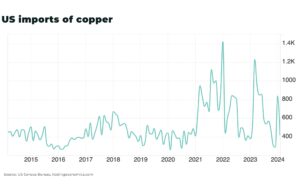
Copper, potash, silver among six minerals added in US Critical Minerals list overhaul
The US Department of the Interior has released the draft 2025 List of Critical Minerals adding six new minerals while phasing out others. To be

